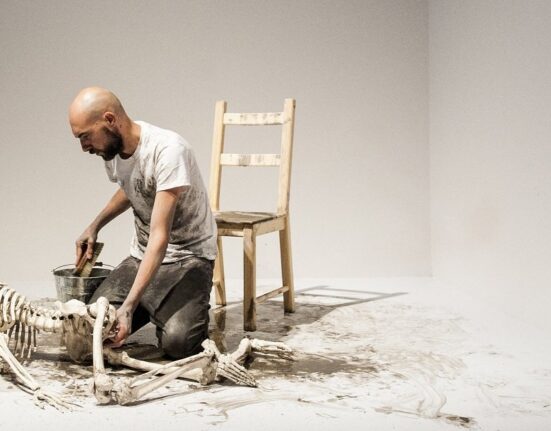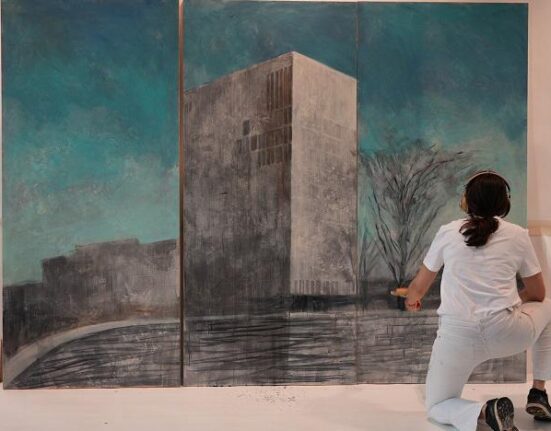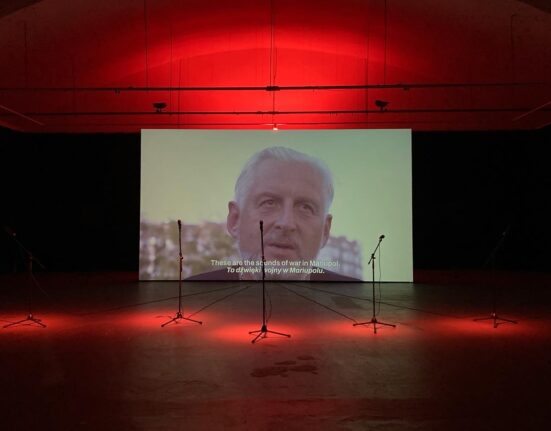April 29-29, 2023
James M. Johnston Center of Undergraduate Excellence, Graham Memorial Hall
Through a generous gift to the UNC Arts and Sciences Foundation, William G. Rand established this lecture series in memory of his late wife, Bettie Allison Rand. This funding allows the Department of Art and Art History to bring one or more eminent art historians to UNC-CH every other year for residencies of various lengths. While they are in Chapel Hill, these scholars present a series of lectures and interact with undergraduate and graduate art history and studio art students.
Schedule of Events
April 28, 5:30 PM
Lecture: Kresge Foundation Common Room, GM 039
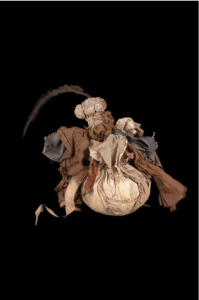 Anne Lafont, Directrice d’etudes (Professor), École des hautes études en sciences sociales (EHESS), Paris
Anne Lafont, Directrice d’etudes (Professor), École des hautes études en sciences sociales (EHESS), Paris
“Chose-Fée or The acculturation of African Objects by the Enlightenment”
The lecture will focus on the modalities of appropriation and intellection of African objects by the philosophical discourses and cabinet practices of the European Enlightenment. The aim will be first to follow the defining thought of Africa and its material and religious culture as it unfolded in the texts that founded both anthropology and aesthetics at the time of their first conceptualizations with the examples of Winckelmann and the Abbé de Brosses. Secondly, this theoretical construction will be confronted with the reality of the African objects actually accessible in 18th Century European collections in order to address the main question: at what cost were African objects integrated, or not, into the scheme of universal history which was one of the Enlightenment’s project?
Followed by a reception in the John Lindsay Morehead II Lounge, GM 109
Image: Paquet de fétiches, 19th c., Kongo, fiber, textile, organic materials, Photo (C) musée du quai Branly – Jacques Chirac, Dist. RMN-Grand Palais / image musée du quai Branly – Jacques Chirac.
April 29, 9 am
Lectures: Kresge Foundation Common Room, GM 039
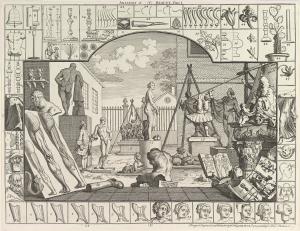 Zirwat Chowdhury, Assistant Professor, Art History, UCLA
Zirwat Chowdhury, Assistant Professor, Art History, UCLA
“Obliquity as Beauty”
In his eighteenth-century treatise on aesthetics, artist William Hogarth invokes blackness to describe the material conditions that prevent a work of art from being seen. In addition to associating blackness with darkness or the absence of light, he also identifies it with the adverse outcome of blending colors or a poor knowledge of pigments, which, he exclaims, has darkened the surface of many paintings with time. Hogarth situates these observations within his broader discussion of the rendering of flesh. As scholars have noted, his networked conception of complexion, echoing prevailing medical discourses on the skin and both developed and illustrated through his technical practice of engraving, underpins his racialized association of beauty with whiteness. Yet, as this talk demonstrates, another networked conception of form runs across the pages of Hogarth’s treatise that not only undermines his racist pronouncements but also elucidates beauty as a condition of oblique, if not opaque, relation.
Image: William Hogarth, The Analysis of Beauty, Plate 1, 1753, etching and engraving.
 Mia Bagneris, Associate Professor, Art History, Tulane University
Mia Bagneris, Associate Professor, Art History, Tulane University
“Materialising Black Beauty or Manifesting Misogynoir?: Theorising the Paradox of Black Feminine Beauty in the Sculpture of John Bell”
The joint projects of slavery, colonialism, and Empire depended upon intersectional constructions of race and gender that excluded women of African descent from the notions of idealised femininity—including and especially ideas about feminine beauty—that early modern European art theorists generally worked to reify and reinforce. In the nineteenth century, white European artists did sometimes render enslaved women of African descent in ways that might be perceived as “beautiful”, but this beauty, inevitably fraught by the inflections of race and the implications of slavery, could never be depicted as straightforward or uncomplicated. This talk considers two works by British Victorian sculptor John Bell, A Daughter of Eve (1853) and The Octoroon (1868), in the context of early modern theories about race, feminine beauty, and the ideological connotations of artistic medium in order to explore the vexed enterprise of conjoining “Blackness” and “beauty” in the European popular imagination, especially within the context of slavery. Materially manifesting the prejudices and anxieties of the cultural contexts that created them, I assert that works such as these hold “Blackness” and “beauty” in strategic tension, simultaneously suggesting the possibility of a kind of Black feminine beauty while ultimately reinforcing misogynoir and doubling down on the exclusion of women of African descent from conventional notions of idealised femininity.
Image: John Bell, A Daughter of Eve, 1853, bronze patina electrotype with silver and gold plating. Courtesy of the National Trust.
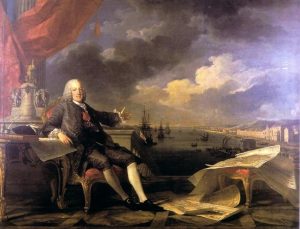 Hector Reyes, Associate Professor of Teaching, Art History, USC
Hector Reyes, Associate Professor of Teaching, Art History, USC
“History in the Pluperfect, The Perfect, and the Future Perfect: On Claude-Joseph Vernet in 1767”
The epistemological radicality of the age of Enlightenment is known well. While thinkers and writers of the eighteenth century rejected a priori definitions of history or of the operations of consciousness, our own historical analysis of these writers often involves the imposition of epistemological taxonomies as they have been mapped out by past and contemporary scholars. In this paper, I will argue that art of the eighteenth century offers a way to recuperate the epistemological radicality of the age of Enlightenment, their indeterminate sense of the shape of history and of the new connections that might be produced unexpectedly by consciousness.
In this paper, I analyze three works from around 1767 that are related to Vernet. In the first section, history in the Pluperfect tense, I analyze Diderot’s famous Promenade Vernet from his Salon of 1767 through the lens of Stoic physics. This underexamined but important branch of philosophy informed Diderot’s reading. It was through Vernet’s work that Diderot saw the ideas expressed by Stoic philosophers made visually manifest. In this way, we can understand that the past viewed the past in new ways. In the second part, history in the perfect tense, I analyze a painting that Ver- net painted partially, a portrait of the Marqués de Pombal, a Portuguese “enlightened” diplomat, whose battles with the Jesuits test our notion of “Enlightenment.” However, from the perspective of interdisciplinary trauma studies, the effects of violence and trauma can be found in the work itself. In this way, the past is evident in the present, a condition of history de- scribed by the perfect tense. Finally, I examine Vernet’s La Source Abondante. Looking at the painting itself, I read it through the lens of contemporary quantum physics and through string theory specifically, to show how the operations of consciousness are implicated in the description of phenomena itself. In this way, the past connects to the future in ways unexpected and unknown to both the past and the future.
Image: Claude-Joseph Vernet and Louis-Michel van Loo, Portrait of Marquis of Pombal, 1766, oil on canvas.
April 29, 1:30 PM
Roundtable: Kresge Foundation Common Room, GM 039
Anne Lafont, Zirwat Chowdhury, Mia Bagneris, and Hector Reyes
Moderated by Kathryn Desplanque, Assistant Professor of Art History, UNC at Chapel Hill
A weeknight or daytime permit is now required after 5:00pm on weekdays. There is no permit required from 5:00pm Friday through 7:30am Monday. A $1.00 one-night pass is available in selected lots. More information can be found HERE.


